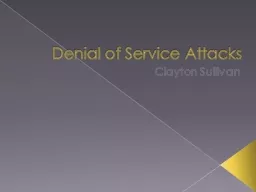PPT-Denial of Treatment Against Your Will: The Battle We’re I
Author : pamella-moone | Published Date : 2016-05-16
National Right to Life Convention Burke Balch JD Powell Center for Medical Ethics July 9 2015 What is Involuntary Euthanasia Understand terms Voluntary Nonvoluntary
Presentation Embed Code
Download Presentation
Download Presentation The PPT/PDF document "Denial of Treatment Against Your Will: T..." is the property of its rightful owner. Permission is granted to download and print the materials on this website for personal, non-commercial use only, and to display it on your personal computer provided you do not modify the materials and that you retain all copyright notices contained in the materials. By downloading content from our website, you accept the terms of this agreement.
Denial of Treatment Against Your Will: The Battle We’re I: Transcript
Download Rules Of Document
"Denial of Treatment Against Your Will: The Battle We’re I"The content belongs to its owner. You may download and print it for personal use, without modification, and keep all copyright notices. By downloading, you agree to these terms.
Related Documents














